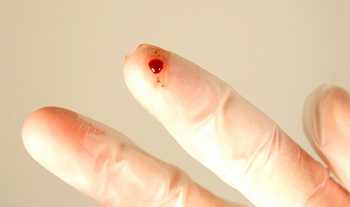BLOODBORNE INFECTIOUS DISEASES: HIV/AIDS, HEPATITIS B, HEPATITIS C
Overview
Exposures to blood and other body fluids occur across a wide variety of occupations. Health care workers, emergency response and public safety personnel, and other workers can be exposed to blood through needlestick and other sharps injuries, mucous membrane, and skin exposures. The pathogens of primary concern are the human immunodeficiency virus (HIV), hepatitis B virus (HBV), and hepatitis C virus (HCV). Workers and employers are urged to take advantage of available engineering controls and work practices to prevent exposure to blood and other body fluids.

Emergency Sharps Information
If you experienced a needlestick or sharps injury or were exposed to the blood or other body fluid of a patient during the course of your work, immediately follow these steps
Resources
- General Resources on Bloodborne Pathogens
- Preventing Needlesticks and Sharps Injuries
- Engineering Controls and Personal Protective Equipment (PPE)
- Management and Treatment Guidelines
- Occupations Affected by Bloodborne Infectious Diseases
- Safe Community Needle Disposal
- Surveillance
- Overview of State Needle Safety Legislation
- Universal Precautions for Preventing Transmission of Bloodborne Infections
- Related Sites
Featured Publications
- Occupational Health Safety Network (OHSN)
A web-based injury and exposure monitoring system for healthcare facilities. - Sharps Safety for Healthcare Settings, including Workbook for Designing, Implementing, and Evaluating a Sharps Injury Prevention Program
- Preventing Exposures to Bloodborne Pathogens among Paramedics
DHHS (NIOSH) Publication No. 2010-139 (April 2010)
En Español - Information for Employers, Complying with OSHA's Bloodborne Pathogens Standard
DHHS (NIOSH) Publication No. 2009-111 (March 2009)
- Page last reviewed: September 6, 2016
- Page last updated: April 5, 2017
- Content source:
- National Institute for Occupational Safety and Health Respiratory Health Division


 ShareCompartir
ShareCompartir
